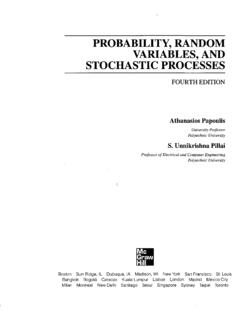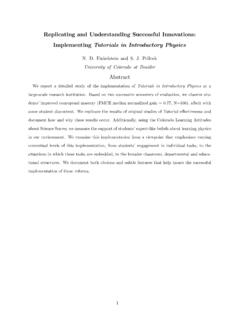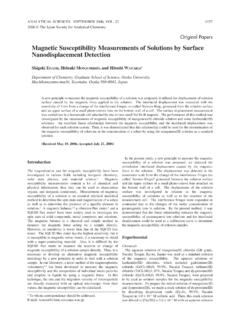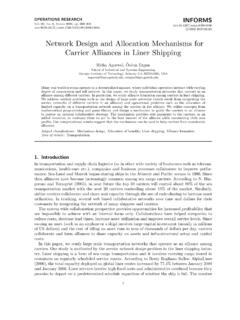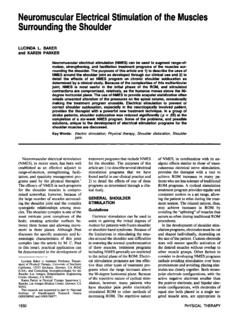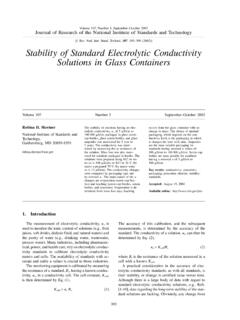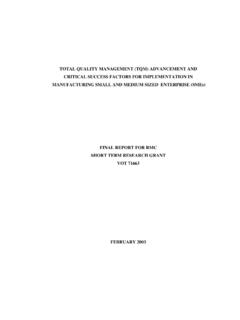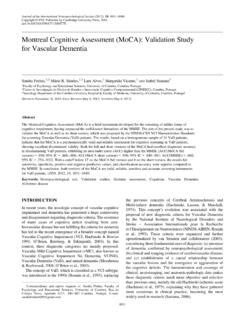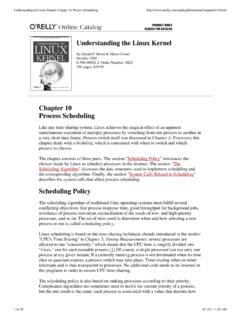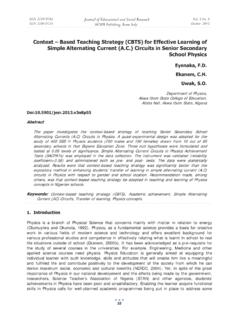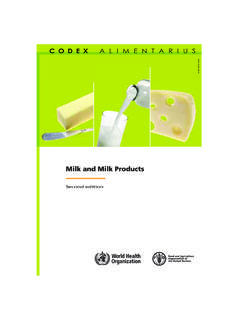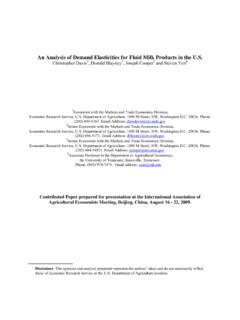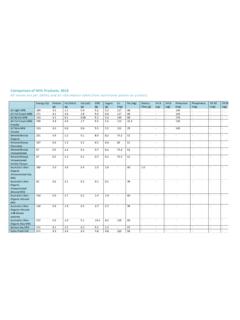Transcription of Psychrotrophic bacteria and milk and dairy products quality
1 D. SAMAR IJA et al.: Psychrotrophic bacteria and milk quality , Mljekarstvo 62 (2), 77-95 (2012)75*Corresponding author/Dopisni autor: Phone/Tel.: +385 1 2393 926; E-mail: - Pregledni radUDK: bacteria and milk and dairy products qualityDubravka Samar ija*, imun Zamberlin, Tomislav Poga i University of Zagreb, Faculty of Agriculture, Department of dairy Science, Sveto imunska 25, 10000 Zagreb, CroatiaReceived - Prispjelo: - Prihva eno: The characteristics of microbial populations in raw milk at the time of processing has a signifi-cant influence on shelf life, organoleptic quality , spoilage and yields of the raw milk , processed milk as well as on the other dairy products .
2 Unfortunately, cold and extended storage of raw milk , as a com-mon practice in dairy sector today, favour the growth of Psychrotrophic bacteria . Therefore, their count in the cooled milk is more than the ideal limit of 10% of the initial raw milk microbial popula-tion. Psychrotrophic bacteria are generally able to form extracellular or intracellular termoresistant enzymes (proteases, lipases and phospholipases) which can cause spoilage of milk and dairy product . In addition, besides exhibiting spoilage features, some species belonging to the psychrotrophs are considered as opportunistic pathogenic bacteria that carry inherent resistance to antibiotics and/or to produce toxins.
3 In sense of quality , Psychrotrophic bacteria have become major problem for today s dairy industry as leading causes of spoilage and significant economic losses. This review focuses on the impact of psychrotrophs on quality problems associated with raw milk as well as on the final dairy products . In addition, the most common species and means of controlling strategies were also discussed Key words: Psychrotrophic bacteria , contamination, biofilm, milk and dairy products quality , controlIntroduction With the introduction of cooling and cold stor-age of raw milk in the 1950s, as obligatory techno-logical steps, its bacteriological quality has been sig-nificantly improved (C a u s i n and B r a m l e y, 1985).
4 Since then, the acidification of raw milk caused by the growth of mainly lactic acid bacteria and/or other mesophilic bacteria was almost completely stopped. According to the official data of the Croatian Agri-culture Agency (internal report HPA, 2011), 93 % of the total quantity of delivered raw milk in 2011 year, achieved the EU standards for the total count of aerobic mesophilic bacteria ( 100,000 cfu mL-1) and for the somatic cells count ( 400,000 mL-1). However, the extended storage times of raw milk at low temperatures (2-6 C) have a signifi-cant influence on the composition of the natural present microbial population.
5 Thus, in cooled raw milk initially dominant Gram-positive mesophilic aerobic bacteria are replaced by Gram-negative and Gram-positive Psychrotrophic bacteria (C a u s i n and Bremley, 1985; Lafarge et al., 2004). The domination of Psychrotrophic bacteria in the total microbial population is even more pronounced when milk is produced in poor hygiene conditions and/or contains increased numbers of somatic cells (Wa l-s t r a et al., 1999a; Barbano et al., 2006). For these reasons, Psychrotrophic bacteria usually account for more than 90% of the total microbial popula-tion in cooled raw milk (M a g a n et al., 2001). Also, C e m p r k o v (2002) reported a high correlation (r= ) between the number of Psychrotrophic bacteria and the total count of bacteria in bulk sam-ples of raw milk in a two-year experiment (three stages).
6 76D. SAMAR IJA et al.: Psychrotrophic bacteria and milk quality , Mljekarstvo 62 (2), 77-95 (2012) In addition to the ability to grow and multiply at low temperatures, psychrotophic bacteria have the ability to produce heat stable extracellular and/or intracellular hydrolytic enzymes (C a u s i n , 1982; C h e n et al., 2003). Many of these enzymes retain their activity even after the conventional heat treat-ment of milk . Furthermore, Psychrotrophic bacteria are the most commonly isolated organisms which caused the spoilage of the heat treated milk and dairy products as the result of post-pasteurization contamination of the products (Larsen and J r-g e n s e n , 1997; E n e r o t h et al.)
7 , 2000; S a n t a n a et al., 2004). Due to these properties of psychro-trophs, the spoilage and reduced quality of milk and dairy products can be both the consequence of the presence of live organisms and/or their thermostable enzymes (G r o s s k o p f and H a r p e r, 1969; Fox and S t e p a n i a k , 1983; B r a u n et al., 1999; Ko k a and We i m e r, 2001). Spoilage is occurred as the change of flavour, undesirable coagulation of milk proteins, and the increased concentration of free fatty and amino acids. In addition, depending on the type of dairy product , the atypical texture and proportion of certain undesirable organic compounds are occurred (C ox , 1993; B o o r and M u r p h y, 2002; M c P h e e and Griffiths, 2002; C e m p r k o v and M i k u l o v , 2009).
8 With regard to other quality aspects, such as suitability of milk for the production of dairy prod-ucts, psychrotophs have a significant negative effects on yields as well as on limiting shelf life of dairy products (C a u s i n , 1982). The majority of Psychrotrophic bacteria that causes milk and dairy product spoilage are not path-ogenic. However, certain species of these bacteria have the ability to produce toxins and/or show re-sistance to antibiotics and therefore must be con-sidered as opportunistic human pathogenic bacteria (N e t t e n et al., 1990; Beattie and Wi l i a m s , 2002; Fi n l a y et al., 2002; M u n s c h -A l a t o s s a v a and A l a-t o s s a v a , 2006; H e m a l a t h a and B a n u , 2010; S e n-e s i and G h e l a r d i , 2010).
9 Almost all species of Psychrotrophic bacteria have the capacity to adhere to solid surfaces so they may form a biofilm on the inner surfaces of dairy equipments. In relation to the planktonic cells of the same bacterial species, biofilm is difficult to remove by means of any conventional cleaning and antibac-terial chemicals. For that reason, in the dairy indus-try, biofilm can be a persistent source of permanent product contamination by psychrotophs which caus-es spoilage and/or can be conditionally pathogenic (S i l l a n k o r v a et al., 2008; S i m e s et al., 2010). The EU standard for high raw milk quality re-quires that the total count of mesophilic aerobic bac-teria is lower than 30,000 cfu mL-1, and the count of Psychrotrophic bacteria that is lower than 5,000 cfu mL-1.
10 In that sense, any increase of psychrotophs in the microbial population of raw milk will nega-tively influence the product quality to a certain ex-tent and, indirectly, will reduce the incomes. Thus, it is estimated that modern dairy industry has losses of up to 30 % due to spoilage and reduced product quality caused by Psychrotrophic bacteria (Va r n a m and S u t h e r l a n d , 1996a; 1996b; G a r b u t t , 1997; R a n d o l p h , 2006). In the context of the negative influence of Psychrotrophic bacteria on milk and dairy product quality , this review aims to describe: characteristics and properties of the most important species of psy-chrotrophic bacteria associated with milk and dairy products and their potential for the occurrence of spoilage of raw milk , heat-treated milk , cream, but-ter and cheese.
